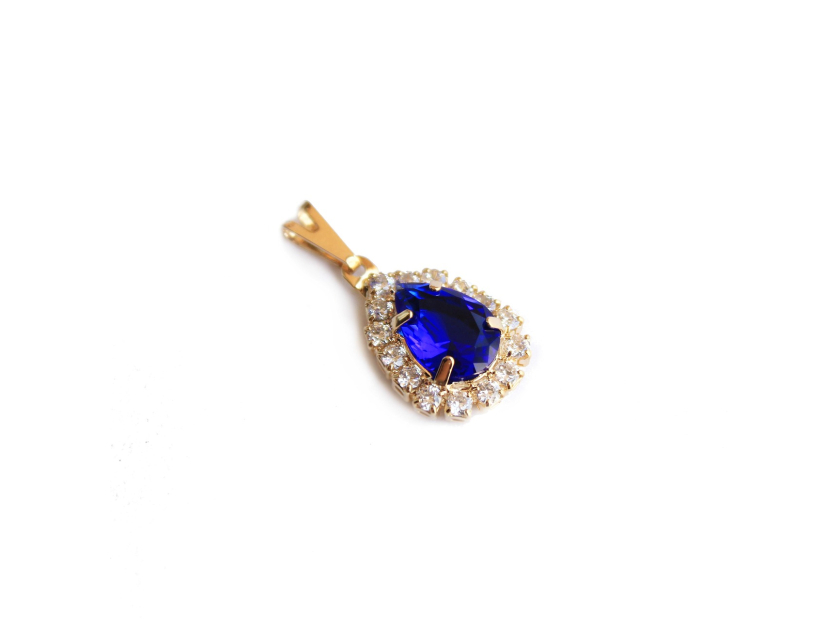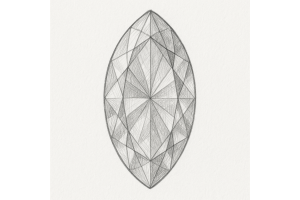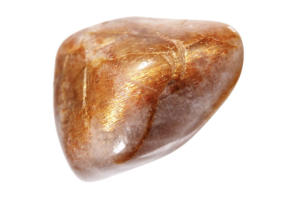GBP
/
GBP
/
Shipping to:
Currency:
What Colours Do Topaz Come In? Discover Every Shade of This Stunning Gemstone
Topaz is a captivating gemstone celebrated for its remarkable range of colours, each offering unique charm and allure.
From the serene blues to the fiery reds, topaz's spectrum is both diverse and enchanting.
In this article, we'll explore the various hues of topaz, delve into the distinctions between natural and treated stones, and provide guidance on selecting and caring for your topaz jewellery.
The Diverse Palette of Topaz Colours
Topaz naturally occurs in a variety of colours, and treatments can further enhance or alter these hues.
Let's explore the most notable shades:
Blue Topaz: A Popular Favourite
Blue topaz has gained immense popularity, often seen adorning rings, necklaces, and earrings.
While natural blue topaz is rare and typically pale, most blue topaz on the market has undergone irradiation and heat treatment to achieve its vibrant shades.
The common varieties include:
- Sky Blue: A light, airy blue reminiscent of a clear sky.
- Swiss Blue: A vivid, electric blue with striking intensity.
- London Blue: A deep, rich blue with hints of inky tones.
These treatments are widely accepted in the gem trade, and the resulting colours are stable and permanent.
If you love vibrant hues, check out gemstone engagement rings for colourful, eye-catching designs.
Imperial Topaz: The Regal Rarity
Imperial topaz is highly prized for its rich golden to reddish-orange hues.
This rare variety is predominantly found in Ouro Prêto, Brazil, and its scarcity contributes to its value.
The warm tones of imperial topaz exude a regal elegance, making it a coveted choice for collectors and jewellery enthusiasts.
If you're drawn to distinctive gems, explore non-traditional engagement rings that feature unique stones like imperial topaz.
Pink and Red Topaz: Delicate and Desirable
Natural pink and red topaz are exceptionally rare and owe their hues to trace elements like chromium.
These colours are often associated with romance and femininity.
Due to their scarcity, some pink topaz stones on the market have been heat-treated to enhance or induce the pink coloration.
If you're after something romantic and meaningful, browse the selection of gemstone rings for gifts, ideal for special occasions.
Colourless (White) Topaz: A Versatile Classic
Colourless topaz is relatively abundant and is often used as a diamond substitute due to its clarity and brilliance.
It's also the starting point for many treated topaz varieties, as it can be irradiated to produce a range of colours, including blue.
Curious how topaz compares to alternatives? Take a look at this helpful guide on lab-grown diamonds vs gemstones.
Yellow and Orange Topaz: Warm and Inviting
Topaz naturally occurs in shades of yellow and orange, often referred to as precious topaz.
These warm hues have historically been confused with other gemstones like citrine and smoky quartz.
The term "sherry topaz" is sometimes used to describe stones with a brownish-yellow to orange colour, reminiscent of sherry wine.
Want something with a golden glow? Check out gemstone engagement rings that highlight warm hues beautifully.
Green Topaz: A Subtle Rarity
Green topaz is quite rare in nature and typically exhibits a pale, minty green hue.
It's often mistaken for other green gemstones like peridot.
Some green topaz on the market results from treatment processes, but naturally occurring green specimens are highly valued.
If you're fascinated by how these gems come to be, read more about how gemstones and diamonds are formed.
Mystic Topaz: A Modern Marvel
Mystic topaz is not a naturally occurring variety but is created by applying a thin metallic coating to colourless topaz.
This treatment produces an iridescent effect, displaying a rainbow of colours that shift with the light.
While visually striking, it's essential to handle mystic topaz with care to preserve its coating.
Looking for statement jewellery? Have a look at gemstone gift rings for something unforgettable.
Natural vs Treated Topaz: Understanding the Difference
While topaz boasts a natural array of colours, treatments are commonly employed to enhance or change its appearance.
Irradiation and heat treatments are standard practices, especially for producing blue topaz.
These enhancements are generally stable and widely accepted in the jewellery industry.
However, it's crucial to purchase from reputable dealers who disclose any treatments, ensuring transparency and informed decisions.
Selecting the Right Topaz Colour for You
Choosing a topaz colour is a personal decision that can reflect individual style and significance.
Consider the following:
- Personal Preference: Select a hue that resonates with your aesthetic and wardrobe.
- Occasion: Certain colours may be more suited to specific events or settings.
- Symbolism: Different colours can carry various meanings; for instance, blue is often associated with calmness, while red signifies passion.
Want a ring that reflects your unique style? Browse non-traditional rings for inspiration.
Caring for Your Topaz Jewellery
Topaz ranks 8 on the Mohs hardness scale, indicating good durability.
However, it has perfect cleavage, making it susceptible to chipping or cracking if struck.
To maintain your topaz jewellery:
- Cleaning: Use warm, soapy water and a soft brush. Avoid ultrasonic and steam cleaners, especially for treated or coated stones.
- Storage: Store separately to prevent scratches from harder gemstones.
- Handling: Remove jewellery during activities that may expose it to knocks or harsh chemicals.
Planning for the future? Complement your piece with diamond wedding bands to create a full bridal set.
Frequently Asked Questions
Is blue topaz naturally occurring?
Natural blue topaz is rare and typically pale. Most blue topaz on the market has been treated to achieve its vibrant colour.
What is the most valuable colour of topaz?
Imperial topaz, with its rich golden to reddish-orange hues, is considered the most valuable. Its rarity and distinctive colour contribute to its high value.
Can topaz change colour over time?
Generally, topaz is colour stable, especially if it's been properly treated. However, coated varieties like mystic topaz can fade or scratch if not cared for properly.
Is mystic topaz natural?
No, mystic topaz is a treated gemstone. It starts as colourless topaz and is coated to achieve its multicoloured, iridescent effect.
Which topaz colour is best for daily wear?
Blue and colourless topaz are both durable and widely used in daily jewellery. Just ensure your piece is well-set and avoid hard knocks to maintain its brilliance.








